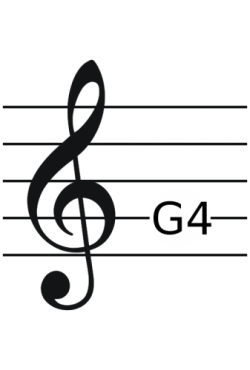Treble Clef

When the G-clef is placed on the second line of the stave, it is called the treble clef. This is the most common clef used today, and the only G-clef still in use. For this reason, the terms G-clef and treble clef are often seen as synonymous. The treble clef was historically used to mark a treble, or per-pubescent, voice part.
Among the instruments that use treble clef are the violin, flute, oboe, bagpipe, English horn, all clarinets, all saxophones, horn, trumpet, cornet, euphonium, baritone horn, vibraphone, xylophone, Mandolin, recorder and guitar. Treble clef is the upper stave of the grand stave used for harp and keyboard instruments. It is also sometimes used, along with tenor clef, for the highest notes played by bass-clef instruments such as the cello, double bass (which sounds an octave lower), bassoon, and trombone. The viola also sometimes uses treble clef for very high notes. Treble clef is used for the soprano, mezzo-soprano, alto, contralto and tenor voices. The tenor voice sounds an octave lower, and is often written using an octave clef (see below) or double-treble clef.
© Symbols.com
